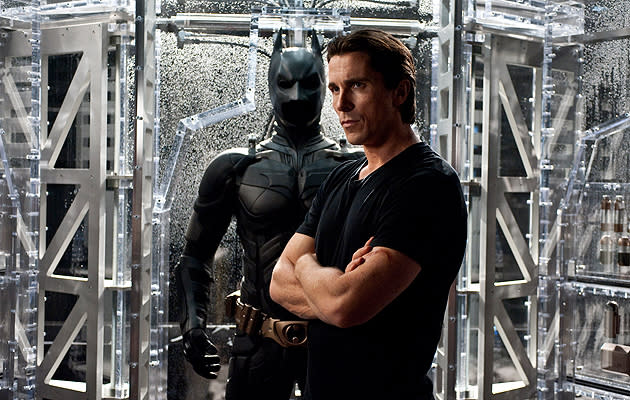 Yahoo UK Movies Features
Yahoo UK Movies FeaturesThe Dark Knight Rises: the secrets of Nolan’s success
We look at how Christopher Nolan reinvented the Batman franchise
While Batman's always been somewhat of a global phenomenon, it's hard to deny that Christopher Nolan's hugely successful, epic Bat-trilogy has redefined not only the movie franchise, but comic book films as a whole.
With the release of ‘The Dark Knight Rises’ this week, we thought it was time to look back at Nolan's legacy, and celebrate the ways in which he transformed a nerd-adored high camp popcorn flick into one of the most groundbreaking, intelligent and bad-ass movie trilogies ever made.
[Related gallery: 'Batman' posters throughout the years]
[Related content: All the latest 'Dark Knight Rises' clips and pics]
Going deep
While it may not be immediately obvious, closer inspection of both ‘The Dark Knight’ and ‘The Dark Knight Rises’ reveals a far more thought-provoking subtext than the apparently predominant theme of 'costumed men bashing each other over the head'.
‘The Dark Knight’ was intentionally layered with all manner of moral and ideological questions around the current state of world affairs and - specifically - America's War on Terror.

As Batman's fight with The Joker intensifies, he's forced to ask some crucial questions about cause and effect - is Batman's gung-ho vigilantism actually a good thing? Or is he simply creating even more problems (unintentionally provoking The Joker and quite literally 'creating' Two-Face) along the way? More importantly, if we fight terror with terror, what separates us from our enemies?
‘The Dark Knight Rises’ has moved with the times, and Nolan admits it has pertinent things to say about not only the Occupy Wall Street movement (Bruce Wayne's excessive wealth is set to play a factor in influencing Gotham's widespread resentment and downfall), but the intensifying societal and economic unrest caused by current world politics.
Not the sort of themes you saw in 'Batman and Robin'.
Forget the costume
During the planning stages for 'Batman Begins', Christopher Nolan and trilogy writer David S. Goyer thought long and hard about how they were going to make their comic book movie better than any that had come before.

"Most comic book movies were just marking time until the guy was in costume," Goyer said. "So we thought, 'if we can get the audience to care about Bruce Wayne and not even care or not if he's in the costume, then we will have properly rehabilitated the franchise."
It's an obvious but simple distinction - Bruce is the bigger character than Batman, and by the time we actually see him suiting up to run around town growling at bad guys and throwing gadgets at goons, every facet of his stylistic and moral motivation makes perfect sense.
Origin-Schmorigin
Poking the fanboy beast isn't usually the smartest of ideas. Mere changes to plot, origin story or casting can lead to widespread ire and a fall in box office receipts.
Yet Nolan's decision to embellish what happened in Bruce Wayne's wilderness years (which most movies and comics skip past) only grounded and improved the character.

Equally, the franchise's villains have been unexpected and intriguingly chosen. Ra's al Ghul and Scarecrow aren't the Bat's most recognisable of foes, and there was a distinct lack of a solid introduction or backstory for The Joker, thus allowing their thematic traits to hammer home harder (Ra's al Ghul focused on Bruce's paternal issues, Scarecrow embodied the personal phobias he had to overcome to become a true hero, and The Joker represented pure chaos).
Not only that, but the introduction (and then brutal, surprising demise) of Rachel Dawes broke two major rules - a non-canon love interest, and the previously inviolable rule of superheroing - the hero always saves the day and the girl.
The Applied Science Division
The scenes where Bruce Wayne and Morgan Freeman chat in the underground warehouse HQ of the Applied Science Division are vital to Nolan’s Batman films. Stay with us...

The introduction of this Wayne Industries offshoot (again is not in the comics) gave every one of his gadgets a real world, military-tech feel. Even when you saw Batman driving an armoured car-tank or flinging piercing Batarangs, it never broached into the realm of silliness. Nolan's decision to shy away from excessively flashy CGI and use real extras and elaborate, technically difficult stunt work set the trilogy apart.
How else did Nolan re-define the genre? Or do you think the whole thing’s over-hyped? Let us know in the comments below….
Watch the trailer for 'The Dark Knight Rises'

 Yahoo Movies
Yahoo Movies 